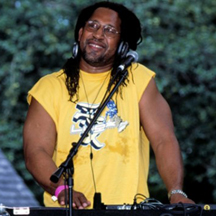KOOL HERC
DJ Kool Herc (born Clive Campbell; April 16, 1955) is a Jamaican–American DJ who is credited with helping originate hip hop music in the early–1970s in The Bronx, New York City. Known as the “Founder of Hip-Hop” and “Father of Hip-Hop”, Campbell began playing hard funk records of the sort typified by James Brown as an alternative both to the violent gang culture of the Bronx and to the nascent popularity of disco in the 1970s. Campbell began to isolate the instrumental portion of the record, which emphasized the drum beat — the “break” — and switch from one break to another. He called his dancers “break-boys” and “break-girls”, or simply b-boys and b-girls. Campbell’s DJ style was quickly taken up by figures such as Afrika Bambaataa and Grandmaster Flash. Unlike them, he never made the move into commercially recorded hip hop in its earliest years. (More from Wikipedia)
Hip hop culture predates the development of rap and hip hop music by nearly a decade. From Wikipedia: “Hip hop is a subcultural movement that was formed during the early 1970s by African-American and Puerto Rican youths residing in the South Bronx in New York City. . . . It is characterized by four distinct elements, all of which represent the different manifestations of the culture: MCing (oral), turntablism or DJing (aural), b-boying (physical), and graffiti art (visual). . . . The origin of hip hop culture stems from the block parties of the Ghetto Brothers, when they plugged in the amplifiers for their instruments and speakers into the lampposts on 163rd Street and Prospect Avenue and used music to break down racial barriers, and from DJ Kool Herc at 1520 Sedgwick Avenue, where Herc mixed samples of existing records with his own shouts to the crowd and dancers. Kool Herc is credited as the ‘Father of Hip Hop’. DJ Afrika Bambaataa of the hip hop collective Zulu Nation outlined the pillars of hip hop culture, to which he coined the terms: MCing or ‘Emceein’, DJing or ‘Deejayin’, ‘B-boying’ [break dancing], and graffiti writing or ‘Aerosol Writin’.”
(September 2016)















